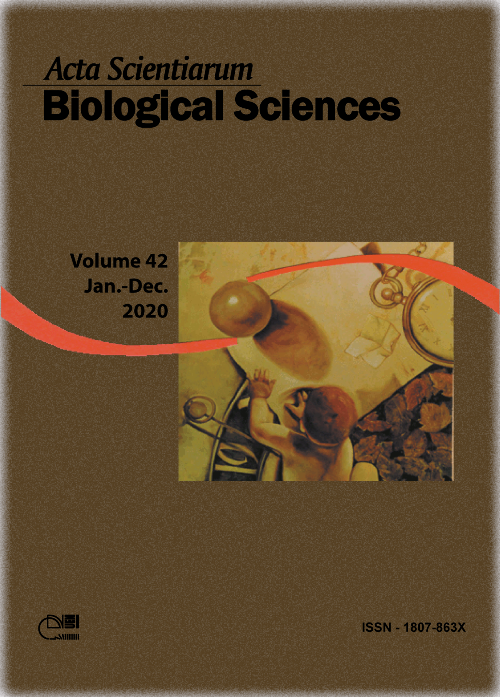Bioprospection and molecular phylogeny of culturable endophytic fungi associated with yellow passion fruit
Resumo
Endophytic microorganisms live inside the plants without causing any damage to their hosts. In the agricultural field, these endophytes might be a strategy of biological control for phytopathogens. We aimed to isolate endophytic fungi from yellow passion fruit (Passiflora edulis) leaves, evaluating its biocontrol capacity by in vitro antagonism against phytopathogen Colletotrichum sp. CNPU378. We also carried out greenhouse experiments in bean seedlings. A high colonization frequency was obtained (89%), and the molecular identification based on DNA sequencing attested Colletotrichum as the most frequent genus and minor occurrence of Curvularia endophytes. The endophytes tested showed different types of competitive interactions in in vitro antagonism inhibition rate ranging from 28.8 to 48.8%. There were 10 promising antagonists tested for their antagonist activity of crude extracts of secondary metabolites, in which strain PE-36 (20.8%) stood out among the other strains evaluated. In the greenhouse assay, plants inoculated only with endophyte Colletotrichum sp. PE-36 was symptomless and suggest that the endophyte strengthened the growth promotion in common bean plants, especially in the root length and number of leaves when compared to control plants and other treatments. Despite many fungi of Colletotrichum genus being described as causative agents of anthracnose, in this study, the plant sampled was colonized predominantly by Colletotrichum endophytes living in asymptomatic relationship. By the way, we come across a Colletotrichum sp. endophyte able to antagonize a Colletotrichum sp. pathogen.
Downloads
DECLARAÇÃO DE ORIGINALIDADE E DIREITOS AUTORAIS
Declaro que o presente artigo é original, não tendo sido submetido à publicação em qualquer outro periódico nacional ou internacional, quer seja em parte ou em sua totalidade.
Os direitos autorais pertencem exclusivamente aos autores. Os direitos de licenciamento utilizados pelo periódico é a licença Creative Commons Attribution 4.0 (CC BY 4.0): são permitidos o compartilhamento (cópia e distribuição do material em qualqer meio ou formato) e adaptação (remix, transformação e criação de material a partir do conteúdo assim licenciado para quaisquer fins, inclusive comerciais.
Recomenda-se a leitura desse link para maiores informações sobre o tema: fornecimento de créditos e referências de forma correta, entre outros detalhes cruciais para uso adequado do material licenciado.












1.png)




3.png)













